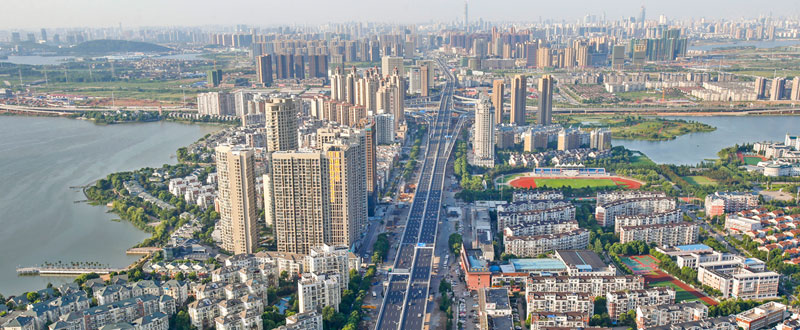Wuhan Economic & Technological Development Zone

Located in the southwest of Wuhan city, capital of central China's Hubei province, Wuhan Economic & Technological Development Zone (referred to as WHDZ, also known as Hannan) started construction in May 1991.
It was approved by the State Council as a national economic and technological development zone in April 1993, and received approval to establish (Hubei) Wuhan Export Processing Zone in April 2000.
As the jurisdiction area has expanded four times since 1996, the total area of the zone has reached 489.7 square kilometers, bringing seven sub-districts and 459,000 residents (among whom 280,000 are permanent residents) under its umbrella.
Industries
The zone has forged several industrial clusters, the pillar industries being automobiles and auto parts, electronics and appliances, and biomedicine.
Advantages
Robust economic growth
In 2017, the regional GDP of WHDZ reached 144.3 billion yuan ($22.82 billion), accounting for about 10 percent of Wuhan's GDP; the output value of industrial enterprises above designated size (with annual income of the main business exceeding 20 million yuan) was 340.38 billion yuan, accounting for about a quarter of Wuhan’s total; the added value of industrial enterprises above designated size reached 78.29 billion yuan; investment in fixed assets was 86.9 billion yuan, of which industrial investment was 56.6 billion yuan, accounting for about a quarter of the city’s total; general public budget revenue reached 36.43 billion yuan, accounting for about one seventh of the city's total.
WHDZ is a main growth engine for Wuhan’s and Hubei’s industrial economy.
Complete supporting industries
As an important manufacturing base in Wuhan city and Hubei province, WHDZ gathers top industrial design, R&D, and consulting service resources for industries including automobile and auto parts, with 141,000 workers.
In addition, the transportation and logistics network is well-developed, including three river-crossing bridges and four deep-water ports.
Advantages in technology and innovation
In 2017, the output value of high and new technology industries hit 239.5 billion yuan, accounting for 28.4 percent of the city's total. The zone was home to two national-level enterprise technology centers and 38 corporate technological platforms above the provincial level, and a technological innovation system with enterprises playing dominant roles took shape. The number of patent applications was 1,216 in 2017, while the number of authorized patents was 447, up by 23 percent compared to 2016. Enterprises in the zone filed 80 patent applications to overseas organizations, an increase of 80 percent. A total of 45 patents are held by per 10,000 residents in the zone -- far higher than the average for the city (28.8) and the country (9.8).
Preferential policies for professionals
The zone has introduced 11 academicians, 20 professionals under the Thousand Talents Program, seven professionals under Hubei’s Hundred Talents Program and 53 professionals under Hubei's Yellow Crane Talent Plan. Moreover, there are 300 experts enjoying government allowances, along with 60,000 skilled workers. It has also established the province's first human resources industrial park, with nearly 20 companies providing high-end professionals with services for enterprises in the zone.
Industrial Parks
The zone consists of eight industrial parks, namely Advanced Manufacturing Industrial Zone, Smart Eco-city, Business Park, Export Processing Zone, Port Logistics Park, Automobile and Auto Parts Industrial Park, General Aviation & Satellite Industrial Park, and Wuhan Jingkai Agricultural Development Investment Co Ltd.
Invest in China Copyright © 2025 China Daily All rights Reserved
京ICP备13028878号-6
 京公网安备 11010502032503号
京公网安备 11010502032503号





